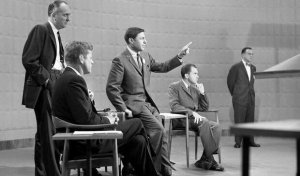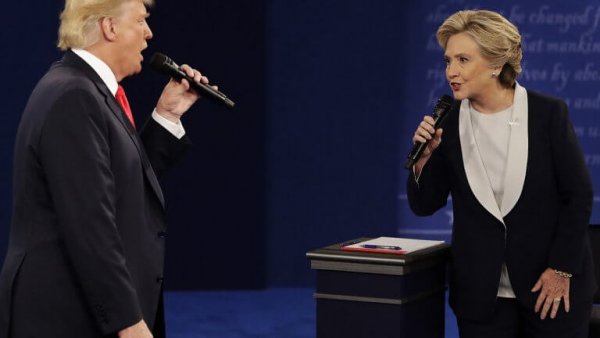What Politicians Say with their Non-Verbal Language


Reviewed and approved by the psychologist Sergio De Dios González

Crowds don’t have a high attention span when they listen to politicians. They retain the overall message of the words. They mostly focus on the messages boiled down into slogans. On the other hand, the leader’s image has a big impact. The communications specialists of each party are very careful with this. The way the politician dresses, their tone of voice, facial expressions all count. Even their gestures lead to a specific feeling towards them.
“The shadier a politician’s desires, the more pompous, in general, the quality of his language becomes.”
-Aldous Huxley-
Politics is getting more and more mixed up with entertainment. Televised debates have been decisive factors during elections in many countries. The media has almost never had such a big impact on the number of votes. And most citizens glue themselves firmly to traditions and feelings when it comes to taking part in the politics of their country.
Researchers have picked up on seven gestures that are common in the politicians who manage to gain the sympathy of the masses. These mannerisms also exist in other kinds of leaders, like business people, managers, or TV “influencers.” They’ve also picked up on other gestures that reveal hidden messages. We’ll tell you about them below.

The 7 effective gestures politicians use
People unconsciously associate people who use certain gestures with a sense that they’re powerful. Of course, this applies to political leaders. Some politicians do them naturally, but other ones have to practice until they make them natural. Here are the non-verbal aspects these people use:
- They don’t wrinkle their brows. A relaxed brow shows command and control of the situation. It gives a sense of confidence and security. On the other hand, a wrinkled brow shows signs of tension and discomfort.
- They look straight into people’s eyes. Or straight at the camera, which is the same thing when it comes to TV. People are more likely to believe people who look them in the eyes.
- Calm and consistent breathing. This is a sign of self-control and conviction about what they say. It means they don’t stumble on their words, or get out of breath. It indicates that they have a “cool head” or are “thoughtful” and intelligent.
- Relaxed hands and fingers. Unlike what a lot of people might think, closed fists, pointing fingers, and other similar gestures lead to a lack of trust. Relaxed hands, though, indicate intimacy and warmth.
- Not fidgeting with their legs and feet. This sends messages of strength, security, and frankness.
- Not touching their face. When people see someone touching their face while they give a speech, they interpret it as that person lying or feeling confused.
- A measured and balanced greeting. People talk about how trustworthy leaders always give a friendly wave to everyone. If they’re in front of a lot of people, they look in every direction and wave.
What people expect from their political leaders nowadays is a kind of protective, trustworthy friend. It’s the same with business leaders or anyone who has a position of leadership and power.
Other revealing gestures
Politicians and leaders always create a visual impact with their presence. It’s their first act of communication with their followers. With that visual impact, there are four areas that have a lot of influence: facial expression, body language, manner of dress, and tidiness. All these elements are part of non-verbal language and create an “impression,” that is, they leave a mark on our perception.

When there’s a hidden message, there are elements of non-verbal language that give it away. Here are some of them:
- Excessive blinking. Neurologically this says that the person is in their head thinking of some way out because they feel trapped. It’s a common gesture for politicians who have to talk about a subject they don’t feel comfortable with.
- Tension in the jaw muscles. This shows up as trouble vocalizing, or as excessive rigidity in the bottom part of their face. And it has to do with the people who are afraid others will figure out what they think or feel about something.
- Pausing for a second to take a breath. This is a gesture that gives away the insincere politicians. It means a conflict between what they say and what they think. Poker players do this to try and guess the other person’s “hand.”
Politicians use psychology of the masses more and more to be able to influence their constituents. It’s a subtle weapon, but it’s very effective. People sometimes use non-verbal language as a communication tool, and other times as a way of manipulating. By knowing how to interpret the bodily expressions of leaders, you’ll be in a better position to control the influence they might have over you.
This text is provided for informational purposes only and does not replace consultation with a professional. If in doubt, consult your specialist.








